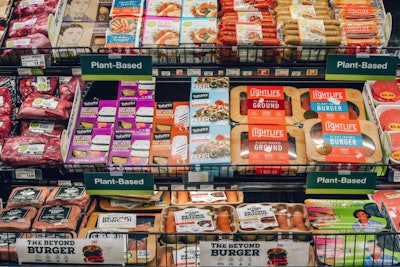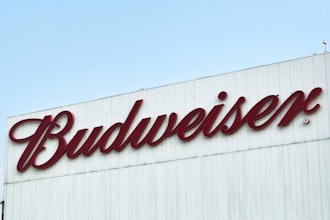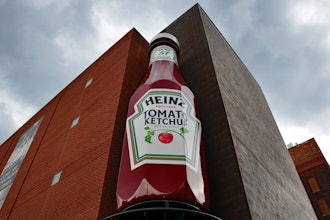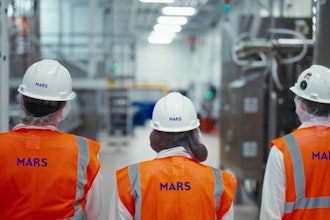
In many ways, plant-based food manufacturers are in a position to write their own ticket. They’re supplying a market that’s growing twice as fast as the overall U.S. food market, with no sign of slowing down. The numbers get even better as you drill down: sales of plant-based eggs, for example, have grown 700% since 2018, trouncing the traditional egg market by a factor of 100. As the market for meat gets leaner, profits for plant-based production have great potential to fatten.
To take advantage of this growth, plant-based manufacturers face a significant hurdle: they must prepare for a new wave of novel technologies and equipment platforms, as well as evolving consumer attitudes, which means rethinking the traditional food manufacturing plant from the ground up. Those who successfully future-proof their operations with flexible, innovation-friendly designs and processes will find this transition much easier, faster, and more cost-effective, which could mean the difference between a share in the rapidly growing market—or a rapid downfall.
Why future-proof plant-based manufacturing?
Future-proofing a facility is all about using flexible, scalable design strategies to protect against volatility and allow you to embrace new technologies and opportunities with minimal capital investment.
To keep up with demand, plant-based food producers have focused their capital investments on speed-to-market, potentially at the expense of developing efficient processing, flexibility to meet evolving consumer tastes, and supply chain robustness. But these choices make facilities susceptible to potentially devastating shocks from future events. And simply “buying” your way out of a shock may be impossible as, even with an infusion of new capital, upgrading a facility requires significant lead time for design, equipment fabrication, shipping, installation, commissioning, and validation. It can take six months to several years to implement a change.
Here are four considerations to keep in mind to future-proof your food manufacturing.
 Mike Hockett/Food Manufacturing
Mike Hockett/Food Manufacturing
1. Climate volatility
Climate change is a growing source of volatility. More extreme weather events, water shortages, and energy blackouts are affecting manufacturers’ abilities to safely operate and efficiently maintain and use their facilities. Plant-based foods can be especially susceptible to utility usage. Besides the typical energy inputs for chilling and freezing required for food, they need steam input for pasteurization and extrusion operations, and water for rehydrating protein concentrates and isolates.
Short-term solutions to build resilience into today’s operations
Minimize water use by optimizing cleaning, using dry methods (e.g., sweeping or wiping) to remove food before wet wash downs. Consider foam cleaning for soap application, instead of spray cleaning.
Reduce the likelihood of leaks by performing regular cleaning and preventative maintenance. Replace worn or cracked gaskets and seals to prevent loss of utilities.
Schedule production to minimize changeovers and therefore the need for cleaning.
Set up a monitoring system and use the data to reduce use of electricity, air, water, and steam.
Long-term solutions for capital projects or facility expansions
Choose appropriately sized control valves and controllers to minimize use of steam, cooling water, and air.
Reuse chilled water and steam condensate.
Install variable speed drives/motors (modulating) for fans, pumps, and compressors.
Purchase high-efficiency equipment, including chillers, freezers, and lighting.
Rely on clean-in-place (CIP) systems to reduce water use during cleaning.
Use on-site power generation, such as solar panels and back-up generators, for lighting and to supplement power for chillers and freezers.
 Giant Heirloom Market
Giant Heirloom Market
2. Consumer trends
Many CPG companies have taken advantage of frequently changing consumer preferences by launching novel products to renew interest in their brands. Manufacturers need to be adaptable and flexible to meet the different ingredients, packaging formats, and processing methods that are required to produce new flavor lines, pack sizes, and claims that address environmental or social concerns.
Plant-based food manufacturers need to be ready for rapid innovation and evolution in consumer preferences. New ingredients frequently enter this space, such as oat-based milk, and new product formats frequently launch, such as plant-based pepperoni. Plus, there are ambitions by many manufacturers to drastically reduce cost of goods sold.
Short-term solutions to build resilience into today’s operations
Use cleanable systems and validated protocols to remove allergens when switching ingredients. This minimizes risk to consumers and simplifies labeling.
Manage personnel flow to prevent cross-contamination of ingredients in processing areas.
Be prepared for smaller-sized runs and optimize changeover times and cleaning protocols.
Design secondary packaging and pallet patterns so they’re compatible with multiple primary packaging sizes.
Outsource non-core production. Suppliers can pre-blend materials—protein concentrate, protein isolate, and flavors—and provide packaging and ingredient formats that are compatible with your line to minimize errors.
Long-term solutions for capital projects or facility expansions
Segregate processing spaces so multiple allergenic ingredients can be safely used simultaneously.
When ordering processing and packaging lines, consider the available number of change parts to expand future production options.
Consider changeover time as part of equipment selection criteria.
Prioritize flexible manufacturing lines. Buy mobile equipment and design rooms and utility systems to accommodate safe and rapid reconfiguration and alterations to the final product format. For example:
Larger doors and taller ceilings will permit movement of big equipment.
Utility drops from the ceiling, via flexible tubing, will better accommodate multiple configurations of equipment.
Equipment on castor wheels—not bolted to the floor—allows for rapid reconfiguration of manufacturing lines. For example, a facility might have extruders permanently in place but have mobile downstream equipment that can make meatballs, patties, or breaded or fried products.
Third-party automation allows machines to be changed with minimal disruptions to data collection and control schemes.
 Kroger Co.
Kroger Co.
3. Labor availability
Recent disruptions, including COVID-19 and the wave of baby boomers retiring, have created nationwide labor shortages. Additionally, the pandemic has prevented operators from working in close proximity, throttling production efficiency. While some of these changes are cyclical and short-lived, manufacturers need to plan for longer-term trends, including increased labor costs and lower availability. Competition for labor is driving improvements in work environments.
Plant-based manufacturers often use novel processing methods. This makes it especially challenging to find qualified personnel or, if they’re trained in-house, especially painful to replace them.
Short-term solutions to build resilience into today’s operations
Provide comfortable common and processing areas:
Make break rooms welcoming.
Provide clean, private locker rooms.
Improve outdoor break spaces with picnic tables or walking trails.
Design processing spaces to include natural light and low noise levels.
Get those steam and water leaks under control to reduce costs and safety risks!
Align your company’s core values with those of your employees, including volunteer opportunities, charitable donations in the local community, and paternity leave.
Improve ergonomics by using large ingredient containers that operators can move with forklifts or handcarts, then pump or dump from a crane. Examples include:
Pump coconut oil from a heated tote or heat-traced lines and vessel.
Store protein concentrate in a silo and convey it into the processing line with pneumatic equipment.
Long-term solutions for capital projects or facility expansions
Automate as much of the process as possible, considering improvement to working conditions as part of the ROI. This helps eliminate repetitive tasks and provides a more consistent product. For example, automating your pre-batch process saves labor and ensures ingredients are mixed in the same order, proportions, and temperature every time.
Automate material movement through the warehouse by using AGVs.
4. Innovative processing
Plant-based food manufacturers are growing as quickly as possible to keep up with the rapid spike in consumer demand. For now, they’re relying on established technologies to support this growth, including extrusion for generating the ‘muscle fiber’, and meat and dairy processing equipment to create the final product. But innovative processing methods and equipment are on the verge of displacing these traditional methods. To stay relevant and competitive far into the future, you need a plan for integrating these new technologies into the core of your manufacturing process, quickly and flexibly.
Short-term solutions to build resilience into today’s operations
Keep up with industry change, such as novel pasteurization techniques for plant-based dairy products and advances in filling lines to extend shelf life, by subscribing to newsletters and having good relationships with key vendors.
Long-term solutions for capital projects or facility expansions
Plan for major changes to facility footprint. New equipment is likely to have different dimensions, and you might need to integrate it alongside existing equipment. If possible, consider designing extra space in the facility or acquire adjacent land for expansion.
Leave room to expand or modify utilities needed for new equipment. This includes expanded boiler capacity and infrastructure to deliver utilities. Provide empty conduit for electrical or control infrastructure before you pour a concrete floor.
Supporting your operations today while thinking about the future
For some producers, a surging marketplace, coupled with innovations in plant-based protein manufacturing, is the formula for success. For others, it could mean the end. To put your manufacturing operation among the winners, you need to adopt a future-proofing mindset. This means shifting from a reactionary approach to a proactive strategy, one that’s resilient enough to withstand the challenges to come and flexible enough to turn those challenges into opportunities. Start by examining the decisions you’re making today, and tomorrow’s success is likely to follow.
 Tony Moses
Tony Moses























